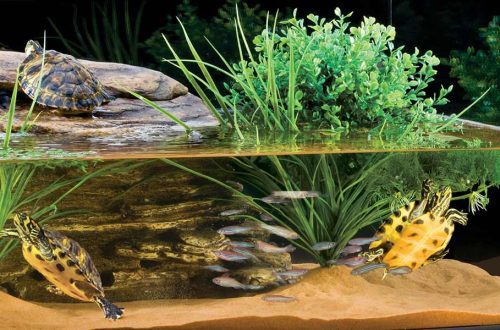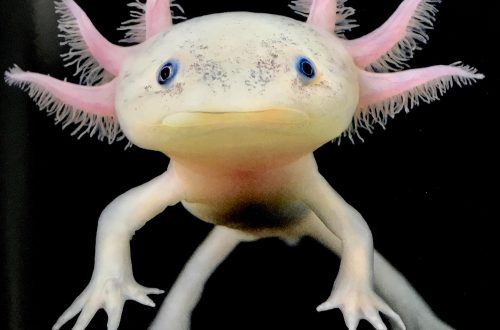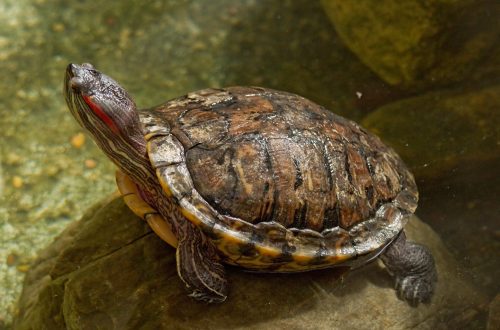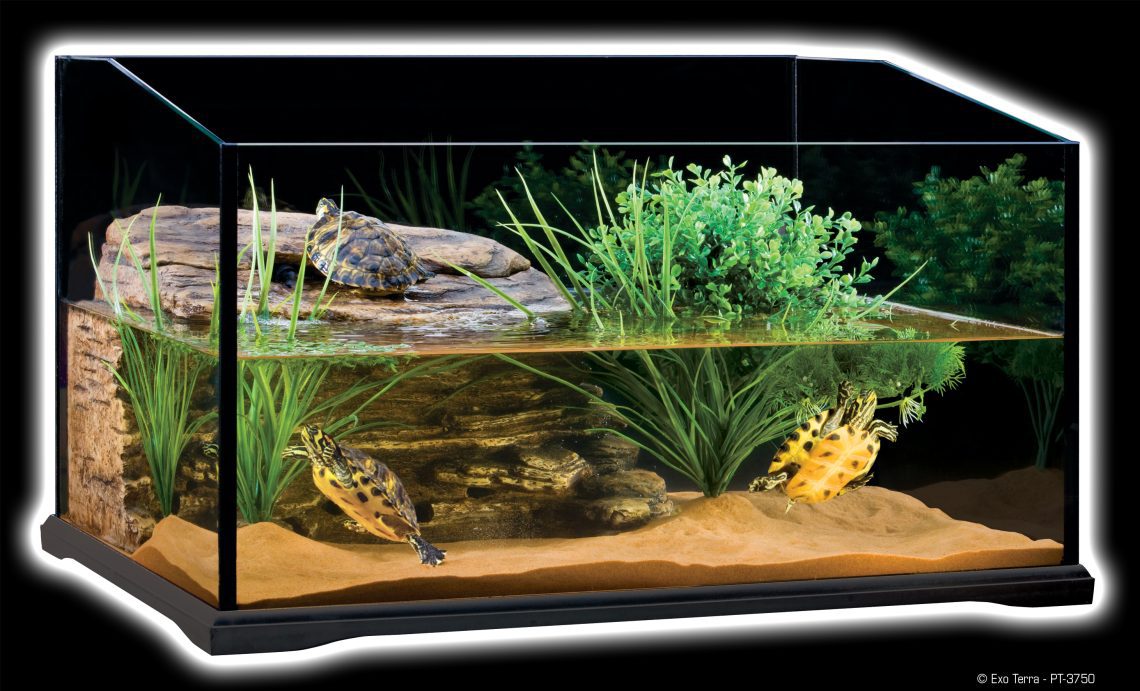
Humid chamber in a turtle terrarium
In nature, turtles burrow into moist soil to help keep their shells even, the same principle should be repeated in a terrarium. A wet chamber is essential for all tortoises that tend to be pyramidal (especially Mediterranean, stellate, panther, spur tortoises) or that naturally spend a lot of time burrowing into the ground.
How to organize a wet chamber?
A plastic container with a lid is placed in the terrarium, which can easily fit one or more turtles (depending on how many you have).
From above, you can make holes for ventilation, and from below – an entrance for a turtle. The entrance should be large enough for your largest turtle to easily pass through, but not too big, otherwise the humidity in the chamber will drop. A layer of moist soil is placed inside, in which the turtle can completely burrow with its shell. Wet soil should be checked regularly for moisture levels and replaced with fresh if necessary.
A closed wet chamber is especially needed if you have an open terrarium or if your turtle is very young or newborn. They have a very high need for moisture. If your turtle doesn’t want to burrow in a wet area, check if it’s too wet or dry, and if the rest of the soil around the wet chamber is dry.
A wet chamber can be decorated with stones, artificial plants or flowers, bark, but this should not prevent the turtle from getting inside, and you from cleaning the chamber.
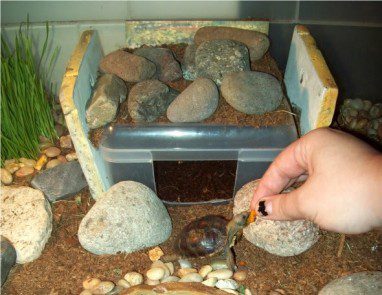
How to organize a wet zone in a terrarium?
For small or closed terrariums, you can make a wet zone. To do this, put a low tray with moist soil in the corner of the terrarium and water the soil only in this container. Around the tray is placed the usual dry terrarium soil for turtles, depending on the type of turtle. It is important to separate the dry substrate from the wet substrate to prevent the growth of mold or fungus on the dry substrate. Wet soil should be checked regularly for moisture levels and replaced with fresh if necessary.
On top of the wet area, you can put a shelter, which will help to keep the moisture in this place a little longer.
What soil should be put in the wet chamber/zone?
Usually, swamp (peat) moss – sphagnum is used for a wet chamber, it perfectly retains moisture as a substrate. It has a property that inhibits the growth of mold and fungus. In addition, it is non-toxic when in contact with turtles and does not affect the intestines if accidentally ingested. It is also readily available and relatively inexpensive.
Advantages of sphagnum: 1. Breathability to keep the earthen substrate moist and at the same time extremely light. 2. Hygroscopicity. According to this indicator, sphagnum is the absolute leader. One part of its volume is capable of absorbing more than twenty parts of moisture! Not even cotton can do that. At the same time, moistening occurs evenly, and moisture is released into the substrate equally evenly and dosed. As a result, the earth mixture containing it will always be wet, but not waterlogged. 3. The disinfectant, antibacterial properties of sphagnum are so high that they have even been used in medicine! Antibiotics, triterpine compounds and many other “usefulnesses” contained in sphagnum moss protect the roots of indoor plants from decay and other troubles.)
Also, garden soil, sand, sandy loam can be used as soil in a wet chamber.



